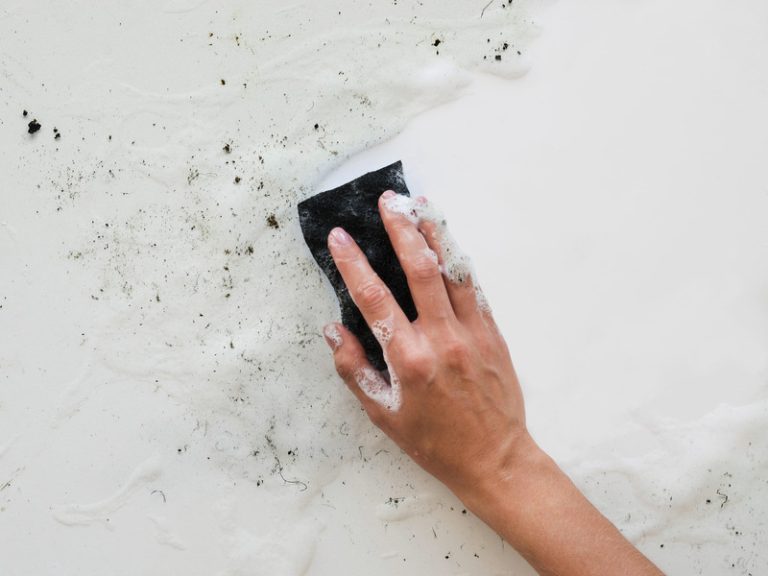A fresh-smelling fridge is essential for a pleasant kitchen environment. If you’re wondering how to remove smell from fridge, there are several effective methods you can try.
Often, unpleasant odors can linger, even after cleaning, making it crucial to address the root cause. For those seeking a natural solution, learning how to remove smell from fridge naturally can be both effective and safe.
Using simple ingredients like baking soda, activated charcoal, or even coffee grounds, you can neutralize odors without resorting to harsh chemicals. With these tips, you’ll keep your fridge smelling fresh and your food tasting its best. Say goodbye to fridge odours and hello to a refreshing kitchen environment!
Why Does Your Fridge Smell?
Before discussing further on how to remove smell from fridge, firstly, it is good to know the reason why the fridge can smell.
Your fridge can emit unpleasant smells due to various factors such as spoiled food, growth of bacteria, and mould, which can thrive in the damp and cool environment of the refrigerator.
Food items stored beyond their expiry dates or not sealed properly can release gases and odours, further contributing to the strong smell in your fridge.
Spills and leaks from containers can lead to sticky residues that attract bacteria and mould, creating a breeding ground for foul odours. Lack of proper cleaning and maintenance can also result in a build-up of food particles and spills in corners and crevices, intensifying the stench over time.
It is crucial to regularly inspect and clean your fridge to prevent these pongy issues.
How to Remove Smell from Fridge?
It’s not as hard as you might think, here is a complete guide on how to remove smell from fridge.
a. Empty and Clean the Fridge
Start by emptying your fridge and removing all the shelves and drawers to give it a thorough clean with a damp cloth.
After removing the shelves and drawers, fill a sink with warm, soapy water and submerge them for a deep clean. Use a sponge or cloth to wipe down the interior walls of the fridge, paying special attention to any sticky spills or residues.
Next, don’t forget about the hard-to-reach areas like the rubber seals around the door. These areas can accumulate grime and mould, so use an old toothbrush or cotton swab dipped in vinegar to clean them thoroughly.
Once you’ve cleaned all the components, make sure to dry everything completely before reassembling the shelves and drawers. This step is crucial to prevent mould growth and odours in your fridge.
b. Use Natural Deodorisers
Natural deodorisers such as bicarbonate of soda and activated charcoal can effectively absorb and eliminate unwanted smells in your fridge.
Essential oils like lavender and tea tree oil can also act as natural deodorisers due to their pleasant scents and antimicrobial properties.
To use these deodorisers, simply place an open box of bicarbonate of soda or a bowl of activated charcoal in the back of your fridge. You can also add a few drops of essential oils to cotton wool balls and place them strategically inside your fridge.
For optimal results, make sure to replace the bicarbonate of soda or activated charcoal every 2-3 months and refresh the essential oil cotton balls weekly.
c. Use Commercial Deodorisers
Commercial deodorizers are specially formulated products designed to neutralise fridge odours swiftly and effectively.
In terms of commercial deodorizers for your fridge, there are various types available on the market to cater to different preferences and needs. One common type is the activated charcoal deodorizer, known for its excellent absorption properties. Then, there are gel-based deodorizers that offer long-lasting freshness. You can opt for scent-infused deodorizers if you prefer a specific fragrance in your fridge.
When choosing the right deodorizer for your fridge, consider factors such as the size of your fridge, the intensity of odours, and your personal preference regarding scents. It’s essential to read product labels and reviews to ensure you’re selecting a deodorizer that suits your requirements.
Once you have chosen the right commercial deodorizer, follow the manufacturer’s instructions for application. Typically, you place the deodorizer in a designated spot in your fridge, such as on a shelf or in the door compartment. Remember to replace the deodorizer according to the recommended timeline to maintain its effectiveness.
You can find commercial deodorizers for fridges in various retail stores, supermarkets, and online platforms. Look for reputable brands and retailers to ensure the quality and authenticity of the product. Consider any precautions mentioned on the product packaging or by the manufacturer. It’s advisable to keep deodorizers out of reach of children and pets and avoid placing them near food items to prevent contamination.
d. Try White Vinegar
White vinegar is a powerful natural cleaning solution that can help remove persistent smells from your fridge when used correctly.
To create a vinegar solution for cleaning your fridge, mix equal parts of white vinegar and water in a spray bottle. Shake well to ensure the ingredients are properly blended. Once the solution is ready, simply spray it onto the interior surfaces of your fridge, focusing on areas that tend to accumulate odours, such as the shelves and door compartments.
After spraying, wipe down the surfaces with a clean cloth or sponge. The acetic acid in white vinegar helps neutralise odours and kills bacteria, leaving your fridge smelling fresh and clean.
For enhanced effectiveness, you can add a few drops of essential oils, such as lemon or lavender, to the vinegar solution. These oils not only provide a pleasant scent but also boost the antimicrobial properties of the cleaning solution.
e. Use Lemon or Orange Peels
Lemon or orange peels are excellent natural deodorisers that can leave your fridge smelling fresh and pleasant.
One simple way to use them is by placing the citrus peels in a small bowl or dish in the back of your fridge. Their natural fragrance will gradually fill the refrigerator, giving it a pleasant aroma. Remember to replace the peels every week or so to ensure maximum effectiveness.
Plus their delightful scent, lemon and orange peels also have the added benefit of absorbing odours. This helps neutralise any unpleasant smells lingering in your fridge, making it a more inviting space.
What Not to Do When Removing Fridge Smell?
In addition to the guide on how to remove smell from fridge as explained earlier, it is also important to know that there are some actions and products that you should avoid to prevent further problems or damage.
One common mistake many people make is relying on strong chemical-based cleaners to eliminate fridge odours. While these may mask the smell temporarily, they can leave behind toxic residues that contaminate your food. Instead, opt for natural solutions like bicarbonate of soda or activated charcoal, which are safer and more effective in absorbing odours.
Another oversight is neglecting to clean the often overlooked areas in the fridge, such as rubber seals, drip trays, and ventilation openings. These spots can harbour bacteria and mould, contributing to lingering odours. Ensure to include these areas in your regular cleaning routine.
How to Keep Your Fridge Smelling Fresh?
If the how to remove smell from fridge guide as explained earlier is your go-to practical step, here are some preventive measures that can prevent the problem before it happens:
a. Regular Cleaning and Maintenance
Regular cleaning and maintenance of your fridge are essential steps in preventing bad odours and ensuring a hygienic storage environment.
Setting up a routine maintenance schedule for your fridge can help keep it in top condition. A recommended practice is to clean the interior of the fridge at least once a month, or more frequently if needed.
Start by removing all items, including shelves and drawers, to access every nook and cranny. Use a mild detergent and warm water to wipe down all surfaces, followed by a solution of bicarbonate of soda and water to eliminate any lingering odours. Don’t forget to clean the exterior of the fridge with a damp cloth to remove dust and spills.
b. Keep Food Covered
Keeping food covered in airtight containers prevents the spread of odours and helps maintain a fresh environment in your fridge. In terms of selecting containers for different types of food, consider using glass containers for acidic foods like tomatoes to prevent any chemical reactions with the container itself. For liquids and soups, opt for leak-proof containers to avoid any spills. Plastic containers with tight-sealing lids work well for storing dry goods such as cereals or nuts.
Organising your fridge by grouping similar items together can help minimise odours and make it easier to locate specific items quickly. Keep fruits and vegetables in separate drawers to prevent them from overripening and causing an unpleasant smell.
c. Store Strong Smelling Foods in Airtight Containers
Storing strong-smelling foods in airtight containers is crucial in preventing them from affecting the overall smell of your fridge.
Examples of potent-smelling foods include onions, garlic, fish, and cheeses. Not properly stored, these items can overpower the entire refrigerator with their strong odours. Utilising airtight containers creates a barrier that seals in the pungent smells, keeping them contained and ensuring they do not permeate other items.
When storing these items, opt for high-quality airtight containers made of glass or BPA-free plastic to maintain freshness and prevent leakage. Remember to clean the containers regularly to avoid lingering smells.
Another effective tip is to wrap heavily fragrant foods in multiple layers of cling film before placing them in airtight containers. This extra barrier helps to further contain the odour and preserve the food’s freshness.
d. Use an Open Box of Baking Soda
An open box of bicarbonate of soda placed inside your fridge can continuously absorb odours, keeping the environment fresh and pleasant.
Bicarbonate of soda, also known as sodium bicarbonate, works by neutralising acidic and alkaline molecules that create odours. When placed in the fridge, the porous structure of the bicarbonate of soda allows it to trap and eliminate foul smells effectively.
To maximise its odour-absorbing potential, it’s recommended to place the box of bicarbonate of soda on one of the shelves rather than in the door, as the constant opening and closing of the fridge door can reduce its efficiency.
For optimal effectiveness, it is advised to replace the box of bicarbonate of soda every 1-3 months, depending on the level of odour absorption and the size of your fridge.
This is a complete explanation of how to remove smell from fridge, to what not to do and some precautions you can take. However, for a truly thorough and long-lasting freshness in your kitchen, consider the professional residential cleaning services from TEKA Cleaning.
Our experienced team goes beyond basic cleaning to ensure your fridge and entire kitchen are impeccably clean, eliminating all unpleasant odours and ensuring a hygienic environment. Stubborn smells and hidden grime can be tough to tackle on your own, but with our expert services, you can enjoy a spotless and fresh-smelling home without the hassle.
Don’t let unpleasant odours linger in your kitchen! Trust the professionals at TEKA Cleaning to handle the job with care and efficiency. Contact us today at 01233 751 544 to schedule your comprehensive residential cleaning service and experience the difference a deep clean can make!
Read also:











